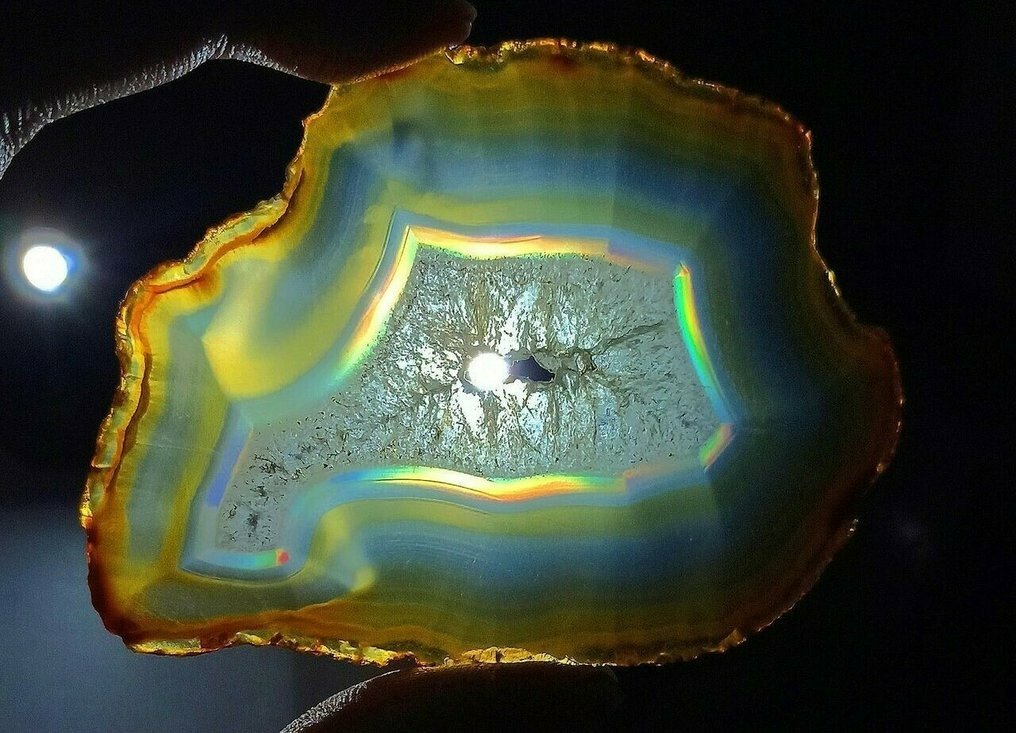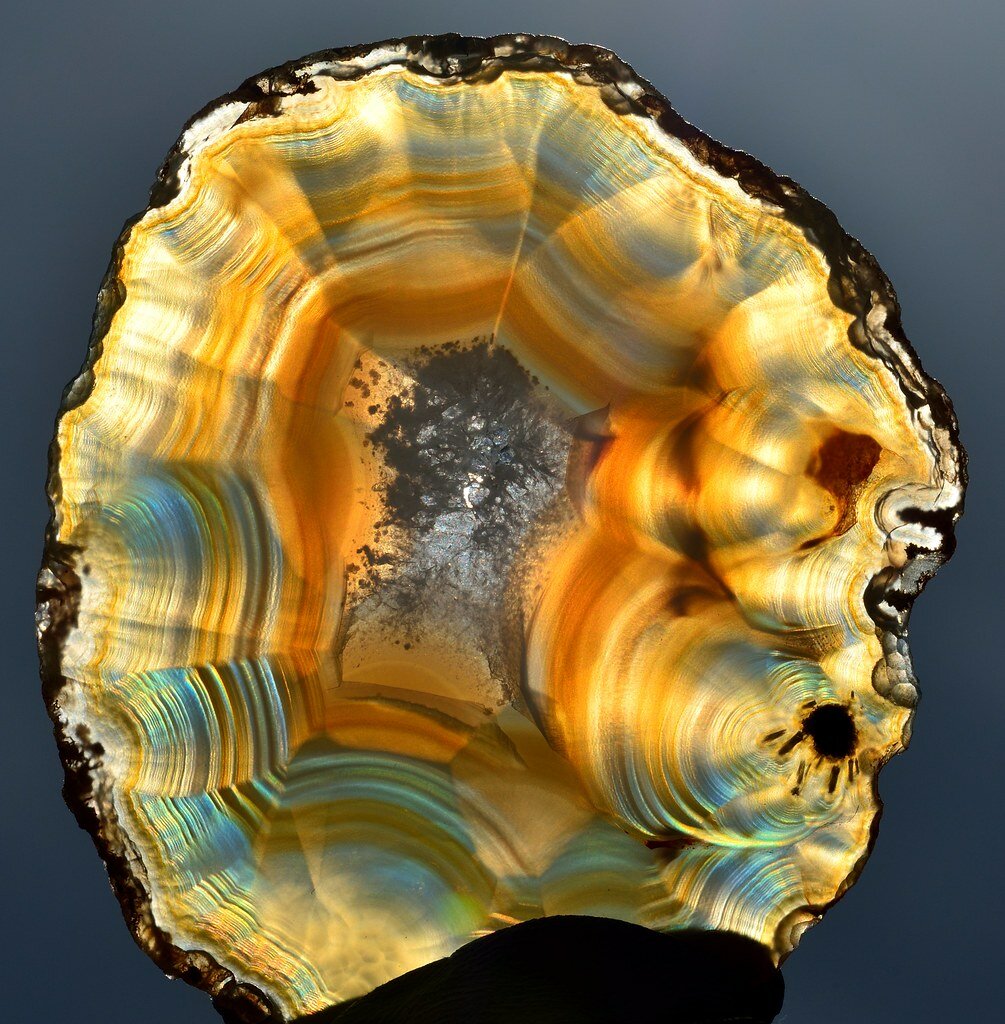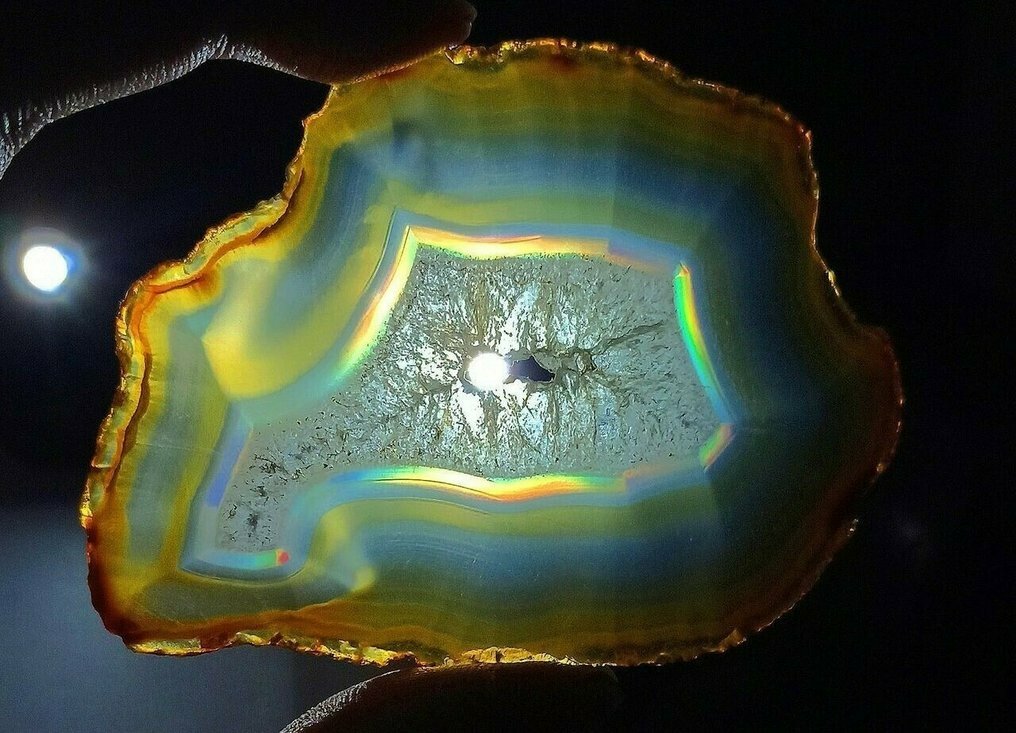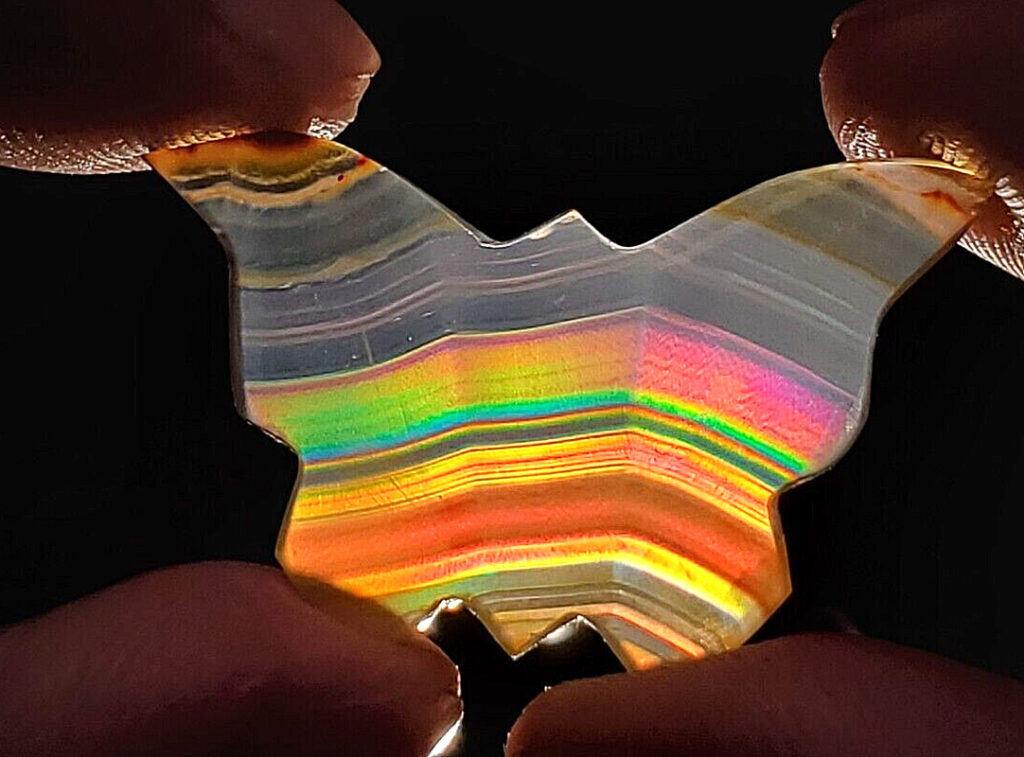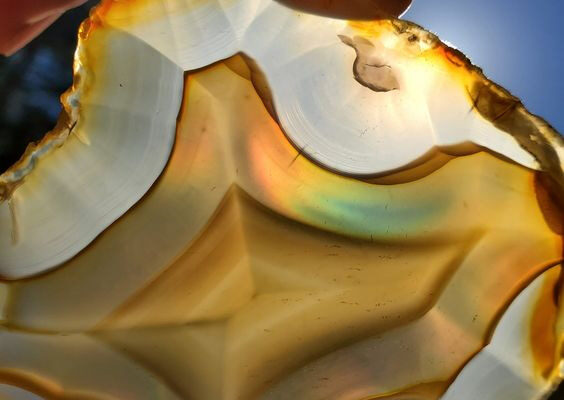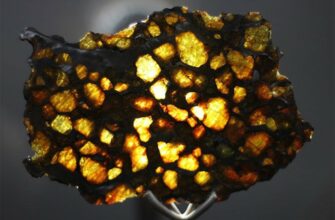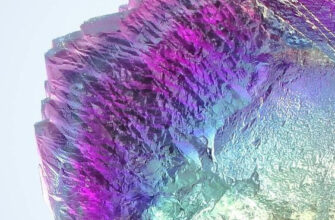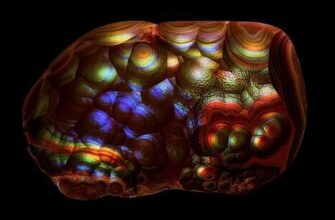Rainbow agate is a stone, mostly decorative, valued by collectors and lovers of beautiful crystals. In its natural state, iris agate looks like any other regular agate. It is only when you cut the stone and illuminate it that the magnificent, brilliant iridescent play of colors of this agate does not appear in all its splendor.
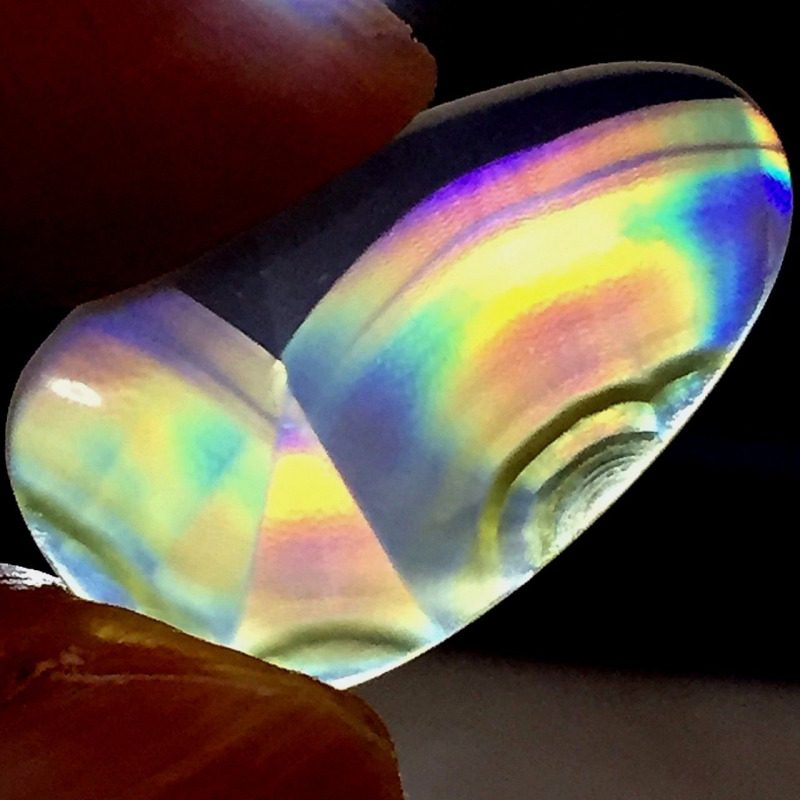
Rainbow agate is a translucent, finely banded variety of agate (a subtype of chalcedony) that separates transmitted light into spectral colors.
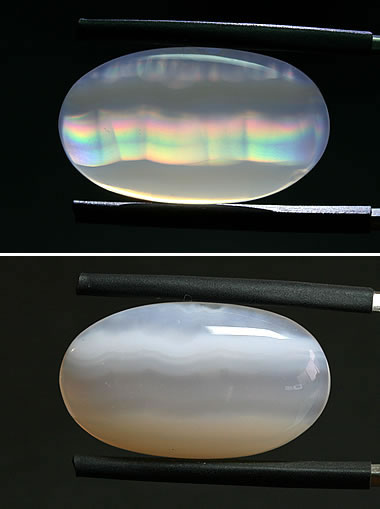

Hence its second name: Iris Agate! Iris is translated from Greek as "rainbow".
In Greek mythology, Iris (Iris) is the messenger of the gods and the personification of the rainbow.
It is said about her like this: "since the sun unites earth and sky, Irida connects the gods with humanity"
Ovid, Metamorphoses 11. 585 ff:
“Iris, dressed in a thousand shades, drew her bow-shaped bow across the sky ... Iris entered, and the bright sudden radiance of her clothes illuminated the sacred place.”

She travels at the speed of the wind around the world, and also goes into the sea and the underworld.
Here is our rainbow agate, a dungeon dweller confirming the myth of the omnipresent Goddess Iris...
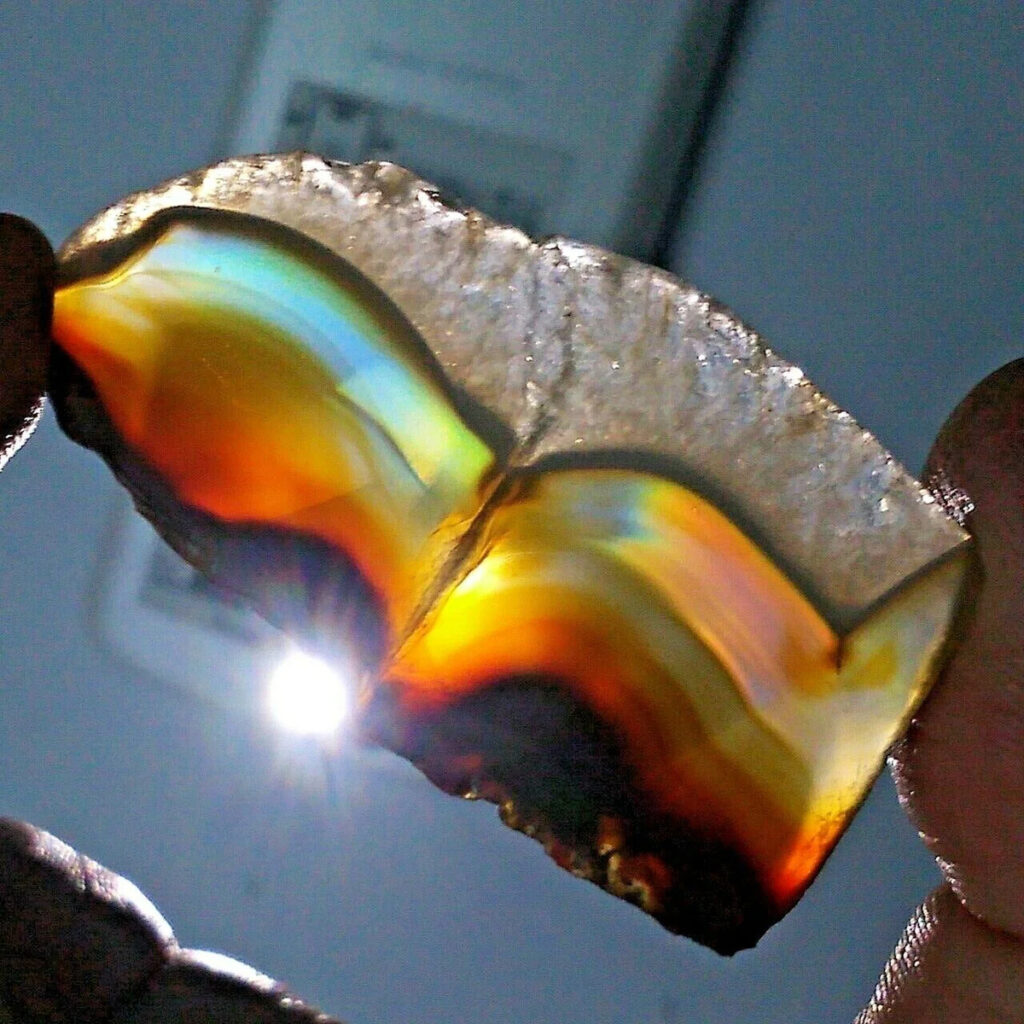
Iris (Rainbow) agate owes its holographic spectrum of colors to the presence of a diffraction grating structure.

The iridescence of the mineral is due to optical inhomogeneities (imperfections) and transparent impurities embedded inside.
The ever-changing variations of the stone pattern are equally stunning. Each agate stone has an individual pattern based on its original cavity shape and shaping.
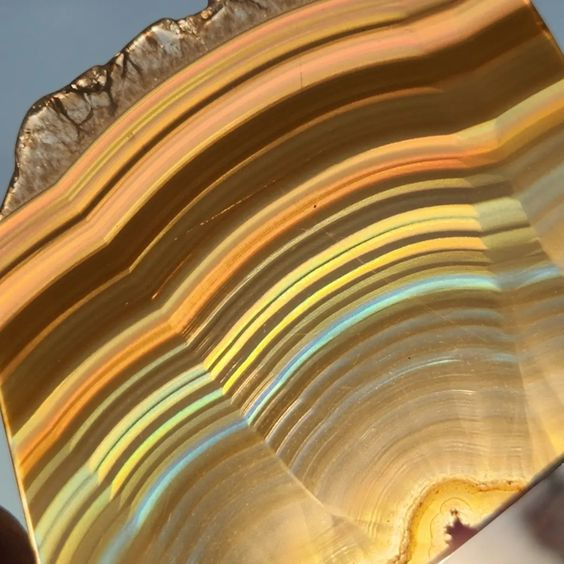
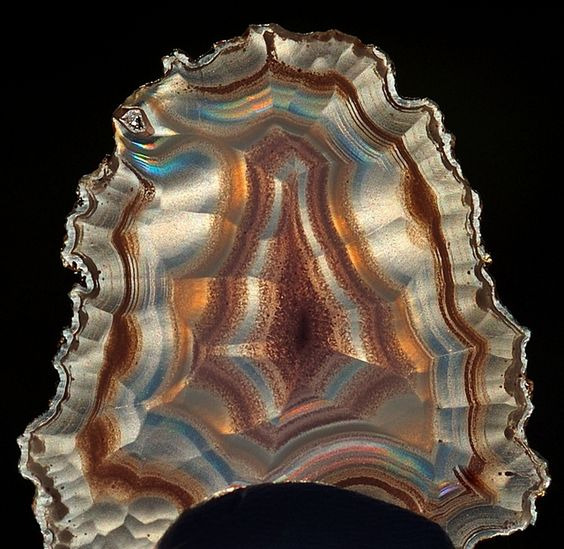
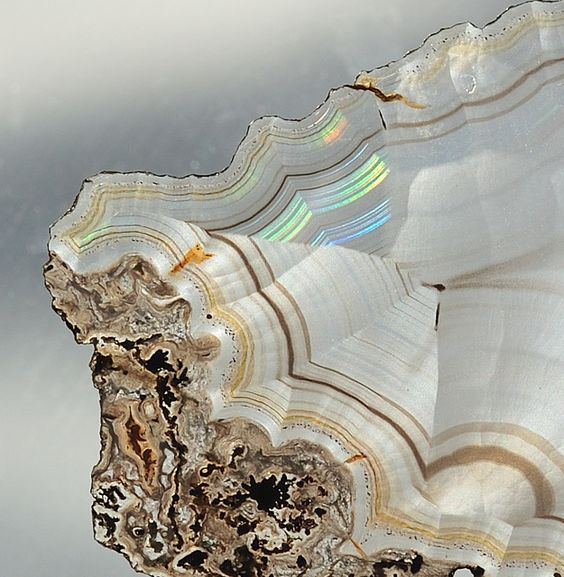
Mineral data of iris agate:
- Chemical formula: SiO2 (silicon dioxide)
- Mineral family: chalcedony
- Composition: cryptocrystalline quartz
- Mohs hardness: 6,5 to 7
- Colour: Rainbow (display glowing colors of the rainbow from different angles)
- Transparency: translucent to opaque
- Refractive index: 1,53 to 1,54
- Density: 2,55 to 2,70 Because color is perhaps the most important factor in judging iris agate specimens, the most unique and iridescent specimens tend to sell for the highest prices.

Iris agate is best known for its attractive color patterns and stripes. Under light (artificial or natural) it reveals a striking rainbow fire. Most photographs simply do not capture this phenomenon properly.
Cutting and polishing iris agate to bring out its iridescence is a real art.

Rough iris agate is often cut into slabs to display its distinct color bands and pattern variations. However, it is not as easy as it seems! First, they must be cut so that the exposed surface is perpendicular to the bands of the agate. The thinner the cut, the stronger the spectral colors.
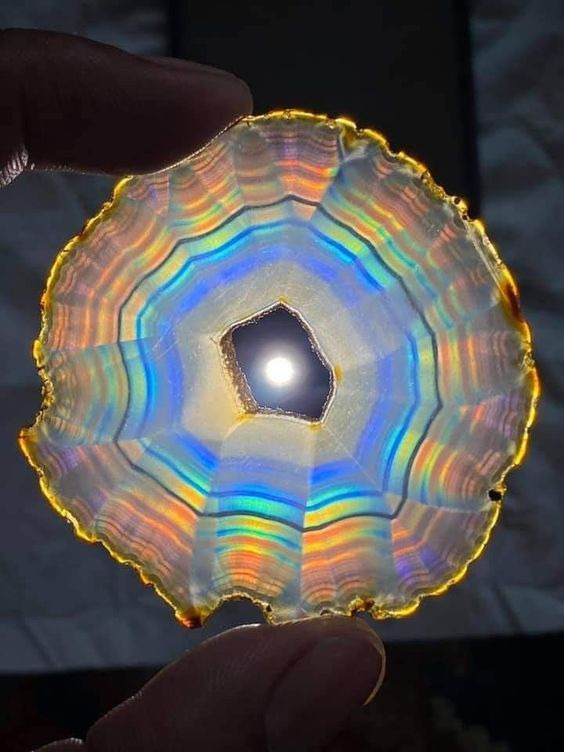
The surface of agate is usually polished, which allows light to easily penetrate without the scattering caused by the unpolished surface.
Similarly, iris agate cabochons, ornamental carvings, and beads are also popular. Faceted cuts and intricate sculptures are less common but do exist.
See the gallery of rainbow agates:
